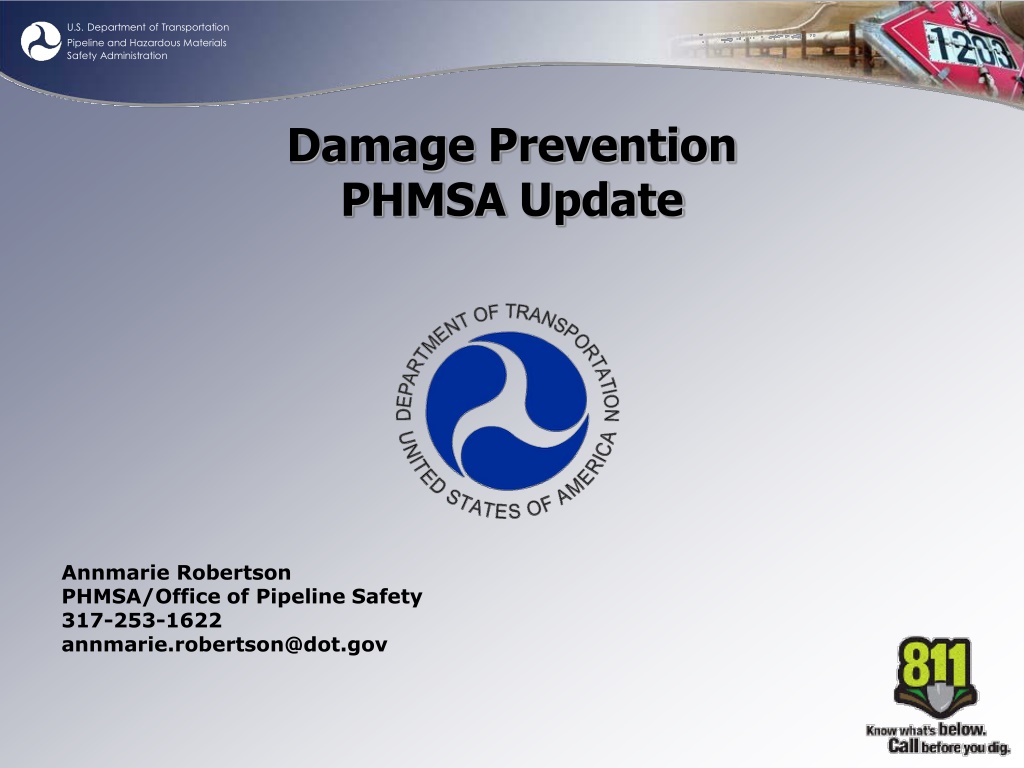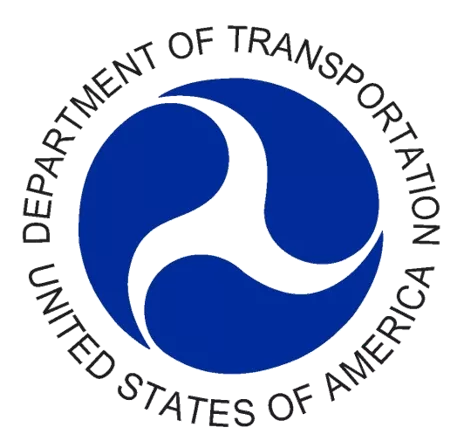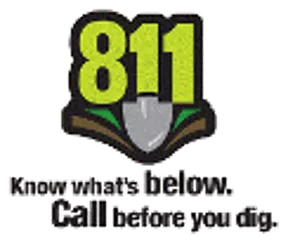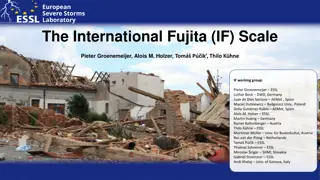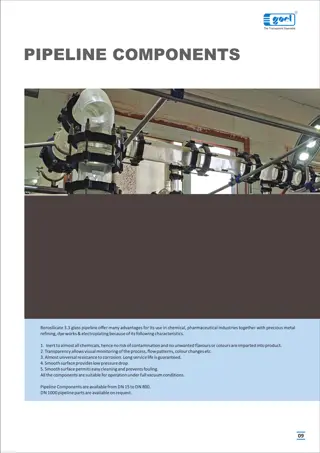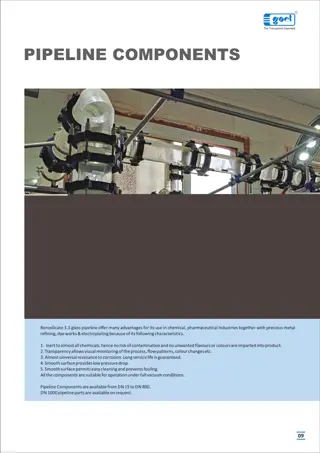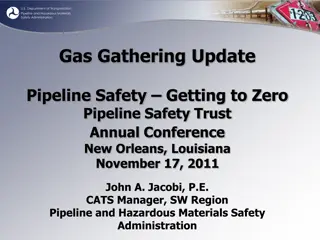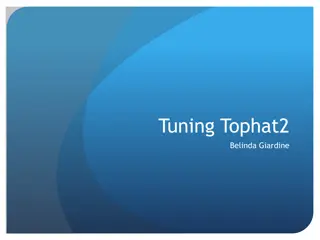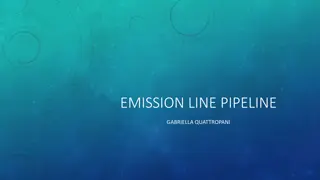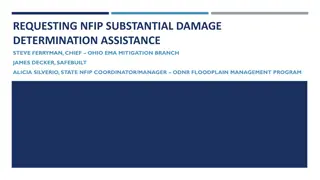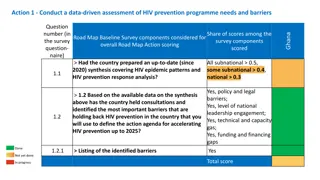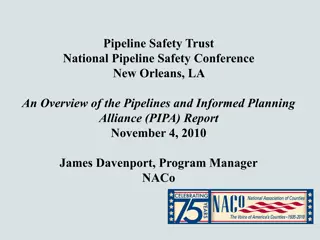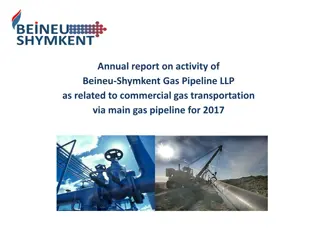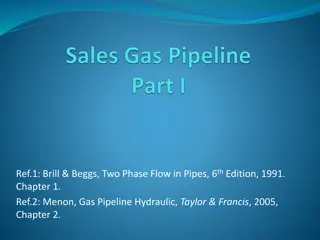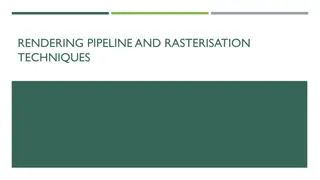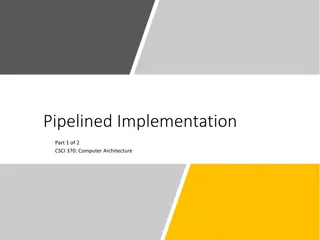Pipeline Safety and Damage Prevention Update
The U.S. Department of Transportation's Pipeline and Hazardous Materials Safety Administration (PHMSA) provides insights on excavation damage as a serious threat to public safety and pipeline integrity. With a focus on prevention, the update highlights a decrease in incidents caused by excavation damage and the importance of collective responsibility in safeguarding critical infrastructure and hazardous materials transportation. The PHMSA emphasizes the need for tailored damage prevention programs and partnerships to enhance safety measures and minimize risks associated with pipeline incidents.
Download Presentation

Please find below an Image/Link to download the presentation.
The content on the website is provided AS IS for your information and personal use only. It may not be sold, licensed, or shared on other websites without obtaining consent from the author.If you encounter any issues during the download, it is possible that the publisher has removed the file from their server.
You are allowed to download the files provided on this website for personal or commercial use, subject to the condition that they are used lawfully. All files are the property of their respective owners.
The content on the website is provided AS IS for your information and personal use only. It may not be sold, licensed, or shared on other websites without obtaining consent from the author.
E N D
Presentation Transcript
U.S. Department of Transportation Pipeline and Hazardous Materials Safety Administration Damage Prevention PHMSA Update Annmarie Robertson PHMSA/Office of Pipeline Safety 317-253-1622 annmarie.robertson@dot.gov Image
U.S. Department of Transportation Pipeline and Hazardous Materials Safety Administration Excavation damage: what we know Excavation damage is a serious threat to public safety and pipeline integrity Data indicates overall decrease in incidents caused by excavation damage as well as gas distribution incidents Excavation damage is largely preventable We can do more Image
U.S. Department of Transportation Pipeline and Hazardous Materials Safety Administration Excavation Damage: Pipeline Incidents Past 20 Years Image
U.S. Department of Transportation Pipeline and Hazardous Materials Safety Administration Pipeline Incidents past 3 years Image
U.S. Department of Transportation Pipeline and Hazardous Materials Safety Administration Gas Distribution incidents: 2005 2009 (significant) Image
U.S. Department of Transportation Pipeline and Hazardous Materials Safety Administration Damage Prevention: PHMSA s View A shared responsibility Pipelines are critical infrastructure that are essential to our way of life. They also carry hazardous materials that pose risks to people and the environment. Damage prevention is a multi-faceted issue Damage prevention programs vary from state to state Guiding principles found in 9 Elements Cited in 2006 PIPES Act Image
U.S. Department of Transportation Pipeline and Hazardous Materials Safety Administration Damage Prevention: What we re doing Tools - for PHMSA as well as for state stakeholders (laws, data, status of state programs, grant projects, etc.) State/local outreach: meetings, letters of support, teleconferences, support of 811, sharing of information Partnerships: States, Common Ground Alliance, Public, Trade Associations, Safety Organizations Rulemaking enforcement Image
U.S. Department of Transportation Pipeline and Hazardous Materials Safety Administration Image
U.S. Department of Transportation Pipeline and Hazardous Materials Safety Administration Nine Elements: What are they? 1. Effective communication between operators and excavators from excavation notification to completion of excavation Fostering support and partnership of all stakeholders Operators use of performance measures for locators Partnership in employee training Partnership in public education A dispute resolution process that defines the enforcement agency as a partner and facilitator Fair and consistent enforcement of the law Use of technology to improve damage prevention processes Data analysis to continually improve program effectiveness 2. 3. 4. 5. 6. 7. 8. Image 9.
U.S. Department of Transportation Pipeline and Hazardous Materials Safety Administration Nine Elements: Where do we stand? PHMSA s goal is to understand state damage prevention programs, foster improvement at state level PHMSA needs clear documentation of state programs to explain funding decisions and to show progress over time Characterization Tool project Image
U.S. Department of Transportation Pipeline and Hazardous Materials Safety Administration PHMSA DP Efforts: Nine Element Characterization Tool What is the Characterization Tool? Fall, 2009 Spring, 2010: Questions for states concerning damage prevention program Discussions with stakeholders in each state Consumer-reports style depiction of results Goal: Understanding state damage prevention programs, share results, foster improvement at state level Image
U.S. Department of Transportation Pipeline and Hazardous Materials Safety Administration Characterization Tool Results http://primis.phmsa.dot.gov/comm/sdppc.htm Image
U.S. Department of Transportation Pipeline and Hazardous Materials Safety Administration CT Results Element 7 Image
U.S. Department of Transportation Pipeline and Hazardous Materials Safety Administration Characterization Tool Seeking Feedback Initial results based on conversations with pipeline safety and one-call representatives only PHMSA seeking feedback on results from other damage prevention stakeholders Feedback will be routed to PHMSA and will be distributed to states Characterization Tool results on website subject to change based on feedback and discussion Image
U.S. Department of Transportation Pipeline and Hazardous Materials Safety Administration Characterization Tool Lessons learned from Characterization Tool project: Results varied based on participants approach Six interviewers Overall positive response to initiative There is perceived value in keeping information current Options for path forward: Updates submitted by states, periodic PHMSA outreach? Other? Image
U.S. Department of Transportation Pipeline and Hazardous Materials Safety Administration PHMSA DP Efforts: Enforcement PHMSA has existing enforcement authority over pipeline operators and their contractors Section 2 of the PIPES Act of 2006: Conveys authority to take enforcement action against excavators who fail to comply with One Call laws and damage a pipeline facility Enforcement authority is limited only can be used in states without adequate enforcement Intent is to incentivize States to adopt/use enforcement authority Image
U.S. Department of Transportation Pipeline and Hazardous Materials Safety Administration Federal Damage Prevention Enforcement PHMSA must: Establish procedures for determining whether a State s enforcement program is inadequate Establish administrative procedures for the State to contest a notice of inadequacy Establish minimum Federal standards for excavators that PHMSA would enforce in a State found to be inadequate Establish adjudication process when excavator is cited by PHMSA Image
U.S. Department of Transportation Pipeline and Hazardous Materials Safety Administration 10/29/2009: PHMSA Issued ANPRM ANPRM = Advance Notice of Proposed Rulemaking Soliciting feedback Criteria for determining if a state s enforcement of damage prevention laws is adequate Process for determining if a state s enforcement of damage prevention laws is adequate Standards to be used in federal enforcement in states with inadequate enforcement program Process for enforcement actions Goal is to minimize need for federal enforcement Image
U.S. Department of Transportation Pipeline and Hazardous Materials Safety Administration Common Comments to ANPRM Keep it simple Clearly define what is expected of state enforcement programs to be considered adequate Minimize exemptions Enforcement must be balanced excavators as well as facility owners must be accountable Image
U.S. Department of Transportation Pipeline and Hazardous Materials Safety Administration Enforcement Next steps http://www.regulations.gov, Docket ID PHMSA-2009-0192 PHMSA evaluating comments (MANY) on ANPRM and will publish an NPRM late 2010 Publication of Final Rule, implementation of program Ex Parte rules prohibit discussion of NPRM details Image
U.S. Department of Transportation Pipeline and Hazardous Materials Safety Administration PHMSA s DP Efforts: Damage Prevention Grants State Damage Prevention One Call Grants Technical Assistance Grants also may be damage prevention-focused Image
U.S. Department of Transportation Pipeline and Hazardous Materials Safety Administration State Damage Prevention Grants Eligibility: Any State authority State must have pipeline safety program pursuant to an annual 49 U.S.C. 60105 certification or 49 U.S.C. 60106 agreement in effect with PHMSA Written designation by the Governor Funding: $1.5M annual budget, $100K maximum award Program is to help states align with the Nine Elements Image
U.S. Department of Transportation Pipeline and Hazardous Materials Safety Administration Grant Program Information SDP: project progress reports, along with contacts for questions concerning awards/projects can be found at http://primis.phmsa.dot.gov/ One Call Grant program info also available on this site Image
U.S. Department of Transportation Pipeline and Hazardous Materials Safety Administration Stakeholder Communications Home Page Image http://primis.phmsa.dot.gov/comm
U.S. Department of Transportation Pipeline and Hazardous Materials Safety Administration Damage Prevention Page Image
U.S. Department of Transportation Pipeline and Hazardous Materials Safety Administration SDP Grant info page Image
U.S. Department of Transportation Pipeline and Hazardous Materials Safety Administration Coming Soon: Laws and Rules Analysis of state laws/rules recently completed currently being vetted 56 fields: Tolerance zone, ticket life, positive response, whitelining, design ticket, locatable facilities, etc. Review of gas distribution operator leak data: In early stages 90,000 leaks per year repaired that are caused by excavation (five-year data) Image Trending downward
U.S. Department of Transportation Pipeline and Hazardous Materials Safety Administration Summary Excavation damage to pipelines remain a National safety and economic concern Comprehensive state damage prevention programs, including effective enforcement, are critical to reducing risks to pipelines. PHMSA is addressing damage prevention through many initiatives, including fiscal support to states For more info, please visit web site Image
U.S. Department of Transportation Pipeline and Hazardous Materials Safety Administration Thank You Annmarie Robertson 317-253-1622 annmarie.robertson@dot.gov PHMSA Stakeholder Communications web site: http://primis.phmsa.dot.gov/comm Common Ground Alliance: www.commongroundalliance.com 811 materials: www.call811.com Image
